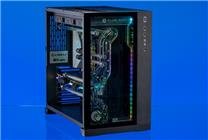Summary
- TSMC continues to dominate the semiconductor industry with its advanced 3nm and upcoming 2nm processes.
- Major tech firms like Apple and NVIDIA are increasing their reliance on TSMC, with significant revenue contributions expected.
- Broadcom is slated to climb the ranks as TSMC’s second-largest customer due to expanding demand for customized ASIC chips.
The Growing Demand for Advanced Semiconductor Technology
As the leading wafer foundry globally, TSMC remains a pivotal player in the semiconductor industry, particularly in the booming AI sector. The company is ramping up production of its 3nm and next-generation 2nm processes, attracting notable interest from several tech giants.
This year, major companies including Apple, Qualcomm, and MediaTek have continued to utilize TSMC’s third-generation 3nm process, known as N3P. Remarkably, the costs associated with these chips have seen a surge, rising approximately 20%. Looking ahead, TSMC is set to commence mass production of its 2nm process next year, with Apple poised to be the first company to launch products using this cutting-edge technology.
Apple has cemented its status as TSMC’s largest customer over the past decade, consistently contributing a substantial portion of the foundry’s revenue. By 2025, it is anticipated that Apple will account for 25-27% of TSMC’s revenue and maintain a significant presence of 22-25% in the following year.
NVIDIA, which has experienced remarkable growth in AI-related chips over the last two years, is also increasing its dependency on TSMC’s advanced processes. This year, NVIDIA represents 11% of TSMC’s revenue, maintaining its position as the second-largest customer. Projections indicate a steady contribution of 11% next year as well.
However, this dynamic landscape may soon shift, with Broadcom emerging as a strong contender to dethrone NVIDIA from its second-largest position. This year, Broadcom accounted for 7% of TSMC’s revenue, matching AMD’s share. Expectations suggest that Broadcom’s revenue contribution will climb to 11-15% by 2026, elevating its status within the semiconductor ecosystem. This anticipated growth is largely fueled by the company’s large-scale orders for customized Application-Specific Integrated Circuits (ASICs), including rumors of a substantial US$20 billion order from OpenAI.
In terms of rankings, MediaTek is expected to maintain its position as the third-largest customer for TSMC this year, contributing 9% of revenue, with a forecasted revenue share of 9-10% in the coming year. Meanwhile, Qualcomm is projected to retain its 8% revenue contribution, which will likely drop its ranking.
AMD’s revenue share is expected to remain stable at around 7%, while Intel’s contribution is slated to increase from 6% to 7% next year, demonstrating a slight upward trend for the tech giant.
The competitive landscape underscores the intense demand for advanced semiconductor technologies, particularly within the AI sector, with TSMC at the forefront. As companies like Broadcom and NVIDIA vie for a larger stake in TSMC’s offerings, the semiconductor foundry continues to solidify its crucial role in shaping the future of technology.
In conclusion, TSMC’s strategic manufacturing advancements and partnerships with major tech players not only highlight its pivotal role in the semiconductor industry but also emphasize the growing demands that these processes serve in an increasingly AI-driven market.







